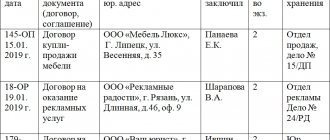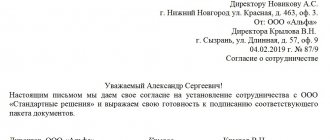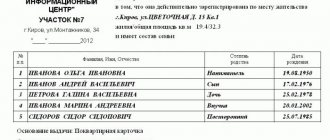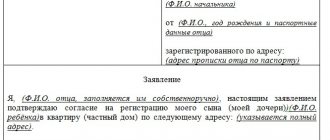Decoding the concept of “personnel”
The personnel of any organization are all those people who work in it under the terms of an employment contract. It does not matter whether a person works on a permanent basis or whether his work is temporary, urgent or seasonal.
Thus, all orders issued in relation to these individuals are considered personnel orders. These may be orders
- employment,
- abbreviation,
- vacation,
- material incentives,
- disciplinary action,
- on duty,
- transfer to another position, etc.
Today, the list of such orders is open, which means that the personnel department of each organization has the right to independently create a list of them. In this case, information about all these orders must be entered in the appropriate registration journal.
The only exception is the management “top” of the company - orders on the appointment of a director and chief accountant, as well as other employees mentioned in the charter, relate to orders on the main activities of a legal entity. This means that they do not need to be entered into the log of personnel orders.
Why do you keep a log book?
Personnel orders are taken into account separately from other documentation of organizations (Article 22.1 of the Federal Law of October 22, 2004 No. 125-FZ). For this purpose, a log of personnel orders is kept - a special register used for the following reasons:
- some orders require long-term storage - 50 or 75 years;
- the content serves as the basis for entering information into employee accounting documents.
For large employers, orders come into force only after registration - entry into the registration form and assignment of a number (clause 84 of GOST R7.0.8-2013).
Why do you need a magazine?
The meaning of the journal is not difficult to understand: it allows you to systematize data on the orders of enterprise management in relation to subordinates, as well as optimize work with them.
In order for the information to be complete, all orders without exception regarding the personnel of the enterprise must be recorded in the journal in chronological order.
If necessary, the magazine helps to quickly find the necessary order, and also, in the event of complex disputes between the employer and the employee and the case is brought to the labor inspectorate or the court, it makes it possible to confirm or refute the legality of certain actions of each party to the labor relationship.
Procedure
The operating procedure is established by the employer in a separate regulatory act on the main activity, which is drawn up in free form and determines:
- company employees responsible for storage and maintenance;
- replacing temporarily absent persons responsible for management;
- maintenance periods (one year, 5 years, etc.) and storage location.
The shelf life of the magazines is 75 years.
Books are stitched, numbered and sealed.
Details on how to flash and seal the book of registration of regulatory acts
You can buy a journal for registering orders in St. Petersburg and Moscow at a stationery store or order it in an online store at a price of 300 rubles per piece.
Whether the organization must have a book of orders is decided personally by the general director. There are no clear instructions in the legislation on the need to have these journals in commercial organizations. However, it is recommended to keep at least four books of accounting for HR regulations:
- about hiring;
- on granting vacations;
- about incentives;
- about layoffs.
These are the most popular employer regulations, copies of which employees request. The HR department has three days to prepare the necessary documents. When there is a clearly established order of storage, their search is faster.
Basic rules for drafting
There is no unified uniform form of the journal, so company employees can create it in any form or, if the organization has a developed and approved document template, based on its sample. In this case, the document must include a number of mandatory information. These include:
- Business name;
- date of opening of the journal, date of its end;
- position, last name, first name and patronymic of the employee responsible for its management;
- document storage period.
The main part of the journal is best formatted as a table, which should be divided into several columns. You must enter in them:
- serial number of the order, date of its issue;
- document number, its type, content;
- Full name and personnel number of the employee to whom it concerns;
- the basis for issuing the order.
If necessary, the table can be supplemented with other information, or, conversely, reduced.
What is recorded in it?
In practice, organizations maintain several registers of personnel, orders are divided according to storage periods:
- 50 years - all about hiring, movements, transfers and combinations, dismissal, certification, all types of payment, leaves (maternity and due to harmful conditions), advanced training, long business trips, etc.;
- 5 years - all about annual and educational leaves, disciplinary sanctions, short-term business trips, etc.
If there is a large turnover of documents, such orders are divided into internal groups with the following registration indices assigned:
- for the movement of personnel - LS index;
- vacations - O;
- sick leave accounting - B;
- business trips - KM.
What to pay attention to when registering
Like the content of the magazine, its design is entirely left to the editors. The journal can be created in simple handwritten or electronic form. Moreover, if the journal is kept on a computer, it is not necessary to duplicate it in printed form. Well, if the company’s management considers it necessary to maintain a document in a “live” form, then you can use both simple blank sheets of paper and company letterhead for the journal.
IMPORTANT! The order must indicate the person responsible for maintaining the order register.
It is necessary to stamp the journal only if the norm for endorsing such documents using stamps is enshrined in the local regulations of the company.
Typically, these magazines are quite impressive in volume and have dozens of pages. In such cases, all sheets of the journal must be numbered, fastened together with a strong thread, writing on the outside the date of creation of the document and affixing the signature of the responsible person.
Results
The journal of orders, the jurisdiction of which extends to ordinary employees of the employer, is a document that, on the one hand, allows you to increase the efficiency of document flow, and on the other hand, can legitimize the created organizational and administrative documents.
The journal is maintained by responsible employees of the enterprise. You can find more complete information on the topic in ConsultantPlus. Free trial access to the system for 2 days.
Memo on systematizing orders
SERVICE FOR ARCHIVES OF THE YAMAL-NENETS AUTONOMOUS DISTRICT
Memo
on the systematization of orders (instructions) in the organization’s office work
. Agreed upon by the decision of the expert verification commission of the archives service of the Yamalo-Nenets Autonomous Okrug dated June 29, 2015 (protocol No. 6)
Salekhard 2015
Introduction
Of great importance in the activities of any organization, regardless of its organizational and legal form, powers, structure and number, are administrative documents.
One of the main types of administrative document in the organization’s documentation support department is an order (instruction).
A memo on the systematization of orders (instructions) in the office work of an organization (hereinafter referred to as the Memo) was developed in order to streamline the issues of systematization of orders (instructions) in the office work of an organization according to their storage periods. Taking into account the fact that an order (instruction) is an individual legal act of an organization performing specialized management functions, the Memo discusses the basic principles and criteria for systematizing orders (instructions), but does not address all issues that may be subject to regulation through orders (instructions) .
The leaflet was prepared to assist employees of the personnel service, the documentation support service of the organization's management, and can also be used by employees of state and municipal archives in working with organizations that are sources of acquisition.
1. Basic provisions
1.1. The main purpose of the order (instruction) is to solve the main and operational tasks facing this organization.
1.2. An order is a legal act adopted solely by the head of an organization to resolve personnel, organizational, economic and other issues.
1.3. An order is a legal act adopted individually by the head of an organization in order to resolve operational issues, has a limited validity period and concerns a narrow circle of officials.
1.4. The main regulatory document establishing the principles of systematization of orders (instructions) is the List of standard management archival documents generated in the process of activities of state bodies, local governments and organizations, indicating storage periods (hereinafter referred to as the List), approved by order of the Ministry of Culture of the Russian Federation dated 25 August 2010 No. 558 “On approval of the “List of standard management archival documents generated in the process of activities of state bodies, local governments and organizations, indicating storage periods.”
1.5. In accordance with Article 19 of the List, 3 types of orders (instructions) are defined: orders (instructions) on core activities, orders (instructions) on personnel and orders (instructions) on administrative and economic issues.
1.6. For each type of orders (instructions) different storage periods are established:
1.6.1. storage period “permanently” - for orders (instructions) on the main (core) activity;
1.6.2. term “75 years EPK” - for orders (instructions) on personnel;
1.6.3. the storage period is “5 years” - for orders (instructions) on administrative and economic issues and a group of orders (instructions) on personnel.
1.7. Orders (instructions) are issued on a standard document form with a certain set of details.
1.8. Orders (instructions) must undergo the registration procedure within a calendar year. Groups of orders (instructions), depending on the purpose and storage period, are registered separately from each other. Serial registration numbers are assigned to orders (instructions) separately within each group.
1.9. As a rule, additional letter indices are not added to the serial number of the order (instruction) for the main (core) activity.
1.10. In the office work of organizations, there is a practice of assigning letter indices to orders (instructions) for personnel:
1.10.1. orders (instructions) for personnel with a shelf life of “75 years EPK” (reception, transfer, dismissal, etc.) are indicated by the letter index “l/s” ( for example, No. 1-l/s);
1.10.2. orders (instructions) for personnel with a shelf life of “5 years” (short-term business trips, annual paid vacations, vacations in connection with training, disciplinary sanctions, duty) are indicated by the letter index “k” (for example, No. 1-k).
1.11. Issues regarding the introduction of letter indices when registering orders (instructions) should be resolved in the organization’s office management instructions.
1.12. Cards (databases), registers, books, journals of registration of certain orders (instructions) have a storage period similar to the registered orders (instructions).
1.13. A more detailed division of registration of groups of personnel orders (instructions) is possible. In this case, independent groups are identified and separate registration files (different journals) are maintained.
1.14. Orders (instructions) are grouped into cases by type and chronology with related applications:
1.14.1. orders (instructions) for core activities are grouped separately from orders (instructions) for personnel;
1.14.2. orders (instructions) regarding personnel are grouped into files in accordance with the established retention periods.
1.15. It is advisable, in case of large volumes of documents, to group orders (instructions) regarding personnel relating to various aspects of the organization’s activities (hiring, dismissal and relocation, etc.) into separate cases.
1.16. In case of violation of the principle of systematization of orders (instructions) ( for example, if orders (instructions) regarding personnel
,
as well as temporary (up to 10 years) storage are classified as orders (instructions) for the main activity and vice versa),
it is necessary to reformat these orders (instructions) into the corresponding cases in ascending order of dates within the calendar year.
1.17. If in the records management of an organization, orders (instructions) for personnel with different storage periods were issued with a single gross numbering, orders (instructions) with a storage period of “75 years EPC” and “5 years” are separated from the files and separate files are formed. In this case, the reorganization of cases is indicated in the certification sheet for the case and the preface to the inventory.
2. Orders (instructions)
on the main (core) activities (storage period - “permanent”)
2.1. An order (instruction) on the main (core) activity is a legal act issued by the head of an organization to ensure the main (core) activity of the organization.
2.2. Orders (instructions) on the main (core) activities are issued for the purposes of:
2.2.1. execution of legislative, regulatory legal acts and other decisions of higher management bodies;
2.2.2. carrying out its own executive and administrative activities related to the performance of the functions and tasks of the organization.
2.3. Orders (instructions) on the main (core) activities formalize the authority of the organization in relation to the subordinate network of organizations.
2.4. The list of issues related to the main (core) activities of the organization, which may be subject to regulation through the issuance of orders (instructions), is determined by the charter (regulations) of the organization. Accordingly, when preparing an order (instruction) on the main (core) activity, it is necessary to pay special attention to the powers of the organization specified in the charter (regulations).
2.5. Orders (instructions) on the main (core) activities of the organization:
2.5.1. staffing schedules, regulations of structural units, job descriptions (job regulations) of employees, work plans, reports on the organization’s activities are approved;
2.5.2. local legal acts are approved (instructions, rules, procedures, regulations, lists and others);
2.5.3. issues of financing the organization's activities, implementation of state and departmental programs, logistics, scientific and technical policy, information and documentation support are regulated;
2.5.4. the procedure (mode) of work, control, decisions and instructions on the organization of work, organizational events (conducting thematic courses, advanced training courses, seminars, round tables), results of work, implementation of special programs, results of audits, inventory of property (fixed assets) are drawn up and others;
2.5.5. collegial and advisory bodies, control (audit) bodies, scientific, expert, methodological, advisory bodies (committees, commissions, councils) are created;
2.5.6. the procedure for holding competitions for filling vacant positions, organizing military registration, employee reservations, a set of measures for civil defense, labor protection, etc. are determined;
2.5.7. issues of delegation of powers, distribution of areas of responsibility, granting rights ( for example, electronic signature)
), coordination of certain types of activities;
2.5.8. appointments to the positions of heads of subordinate organizations are formalized;
2.5.9. the creation, renaming, reorganization, liquidation, change of departmental subordination of the institution, and the formation of branches are formalized;
2.5.10. other issues are regulated if there is authority.
2.6. It is not recommended to divide orders (instructions) on the main (core) activities into groups and create several cases on different topics. In organizations that have a large volume of orders (instructions) on the main activity, for the purpose of carrying out an operational search, it is allowed to separate orders (instructions) on the main activity into separate groups (for example, orders (instructions) on conducting official inspections, control measures, state (municipal) procurement
,
environmental assessment and others).
2.7. In organizations that are not sources of acquisition of state and municipal archives, the shelf life of orders (instructions) for permanent storage cannot be less than 10 years. In accordance with the current legislation in the field of archival affairs, until the organization carries out an examination of the value of documents in the prescribed manner, the destruction of documents is prohibited.
3. Orders
(instructions) on administrative and economic issues (storage period - “5 years”)
3.1. Orders (instructions) on administrative and economic issues are administrative documents aimed at solving administrative and economic problems facing the organization.
3.2. The List in section 10 “Administrative and economic issues” identifies four areas related to administrative and economic activities. Orders (instructions) issued in these areas should be classified as a group of orders (instructions) on administrative and economic issues:
3.2.1. on compliance with the internal regulations of activities (for example, an order (instruction) on establishing access control in the organization; on admission to office premises during non-working hours and on weekends; on violation of internal labor regulations);
3.2.2. on the operation of buildings and premises (for example, an order (instruction) on the use and disposal of property; on leasing premises; on property insurance; on sanitary and hygienic treatment of premises)
;
3.2.3. on transport services and internal communications (for example, an order (instruction) on the allocation of vehicles; on the consumption of fuels and lubricants; on the provision of communication means for conferences, meetings; on the operation of communication means; on the organization of protection of communication networks);
3.2.4. on ensuring the security of the organization (for example, an order (instruction) on the organization of fire protection of the organization; on improving the technical and anti-terrorist strength of the organization; on security activities; on the design and operation of technical means)
.
3.3. Organizations in which the above functions are the main (core) activities, orders (instructions) on these issues are postponed for permanent storage.
3.4. An order (instruction) containing issues of the main activity and instructions of an administrative and economic nature relates to the main activity and is stored permanently (for example, an order (instruction) on the preparation and holding of a conference may contain an instruction to the head of the relevant department on the organization of transport services for participants of the event
).
4. Orders
(instructions) for personnel (storage period - “75 years EPC”)
4.1. Orders (instructions) for personnel document the labor relations between employer and employee, which are regulated by the Labor Code of the Russian Federation and other regulatory legal acts. These orders (instructions) formalize the order of organization by the employer and the facts of the employee’s implementation of labor functions relating to the terms of the employment contract.
These orders (instructions) will further serve as the legal basis for satisfying the social and legal requests of citizens regarding seniority, wages, and awards.
4.2. Orders (instructions) for personnel are issued:
4.2.1. hiring (transfer, relocation, combination, filling a vacant position);
4.2.2. dismissal (termination of the employment contract);
4.2.3. certification, increase in class (grade), assignment of title (rank);
4.2.4. changing the surname (first name, patronymic) in accounting documents;
4.2.5. encouragement (declaration of gratitude, awarding a certificate, etc.) ( it should be noted
that orders (instructions) on awarding third-party organizations and their employees for significant contributions to solving the problems facing the awarding organization should be classified as orders (instructions) on the main activity);
4.2.6. remuneration, establishing an increase to the official salary (for combinations, special nature of work, length of service, etc.), bonuses for employees ( at the same time, orders (instructions)
on bonuses for inventions and rationalization proposals are documents of permanent storage)
;
4.2.7. Providing vacations to employees:
4.2.7.1. with difficult, harmful and dangerous working conditions;
4.2.7.2. for child care;
4.2.7.3. without maintaining maintenance (salary) ( for example, for family reasons and other valid reasons; working old-age pensioners; working disabled people; in cases of marriage registration; for preparing and defending final qualifying work and passing final state exams and other grounds provided for by labor legislation )
;
4.2.8. sending workers on long-term domestic and foreign business trips, business trips for workers with difficult, harmful and dangerous working conditions;
4.2.9. investigations of occupational poisonings, diseases, accidents;
4.2.10. student internship, if during this period the students were paid wages and paid insurance contributions to the Pension Fund of the Russian Federation ( if wages were not paid, then these orders are documents of permanent storage).
5. Orders
(instructions) for personnel (storage period - “5 years”)
5.1. Orders (instructions) on personnel (term
storage - “5 years”), labor relations are formalized that promptly regulate the performance of the labor function by the employee.
5.2. Orders (instructions) for personnel with a shelf life of “5 years” are:
5.3. on the provision of annual paid leave (on recall from leave) and leave in connection with training;
5.4. on the provision of material assistance;
5.5. on duty on weekends and holidays;
5.6. about short-term domestic and foreign business trips;
5.7. about disciplinary sanctions;
5.8. on announcing a competition for inclusion in the personnel reserve, on inclusion in the personnel reserve, on exclusion from the personnel reserve.
Conclusion
In most organizations, the systematization of orders (instructions) is carried out in violation of its principles: for example, often orders (instructions) for personnel, as well as temporary (up to 10 years) storage are classified as core activities. Knowledge of the issues of systematization of orders (instructions) in the current office work of an organization will allow you to avoid mistakes when forming them into files, preparing for archival storage, and also prevent the receipt of documents that do not have historical value for permanent storage in state and municipal archives.
Streamlining the issues of systematization of orders (instructions) will eliminate the formation of orders (instructions) for personnel separately from the main set of personnel documents with a shelf life of “75 years of EPC” remaining in storage in the organization. Accordingly, it will ensure high-quality preparation of responses to citizens’ requests for confirmation of the facts of labor activity in the organization.
A full set of orders (instructions) on the main (core) activities, transferred for permanent storage to state and municipal archives, will allow you to obtain maximum information about the role and significance of the organization in the public administration system or a specific industry.
List of sources used
1. Federal Law of October 22, 2004 No. 125-FZ “On Archiving in the Russian Federation” / Collection of Legislation of the Russian Federation, October 25, 2004, No. 43.
2. Methodological recommendations for the development of instructions for office work in federal executive authorities / Rosarkhiv, VNIIDAD. - M., 2010.
3. List of standard management archival documents generated in the process of activities of state bodies, local governments and organizations, indicating storage periods / Rosarkhiv, VNIIDAD. - M., 2011.
4. List of documents with storage periods of the USSR Ministry of Education, bodies, institutions, organizations and enterprises of the educational system / Ministry of Education of the USSR. – M., 1981.
5. Bykova T.A. Vyalova L.M., Sankina L.V. Office work: textbook / Bykova T.A., Vyalova L.M., Sankina L.V.; under the general editorship of prof. Kuznetsova T.V., 2nd ed., revised. and additional – M.: MCFR, 2006.
6. Kunyaev N.N. Documentation: textbook / Kunyaev N.N., Uralov D.N., Fabrichnov A.G.; edited by prof. Kunyaeva N.N., 2nd ed., erased. – M.: Logos, 2011.
7. Basakov M.I. How to correctly prepare an order: educational and practical manual / Basakov M.I., 6th ed., revised. and additional – M.: Publishing and trading corporation “Dashkov and K”, 2009.
8. Yankovaya V.F. Systematization of orders in the office work of an organization / Yankovaya V.F. // Secretary-referent. No. 7 2007 / Office work.
Journal compilation
Registration books are designed for competent record keeping. Basically, the duties of a clerk are performed by employees of the personnel department or office.
Regardless of who performs such a function, the compilation of journals and registration of documentation is subject to the same rules:
- take into account all current papers, executive, reference;
- correspondence is recorded once, its movements across structural units are not recorded;
- registration is carried out according to documentary type, author's content;
- the date of recording the outgoing order is combined with the day of its signing.
Numbers are assigned to documents in the order they are received during the year; they cannot be repeated in order to secure the reliability of the search feature. For this purpose, documents are endowed, in addition to registration numbers, with indexing - additional symbols. Records are kept throughout the year, but it is not necessary to close the half-empty book, it is enough to separate them with a line and start the new year with registration under No. 1.
[docs]
You can learn about what kind of logs there should be and how to flash them in this video.
about the author
Grigory Znayko Journalist, entrepreneur. I run my own business and know first-hand the problems and difficulties that individual entrepreneurs and LLCs face.
Shelf life
The storage periods for the registration log are regulated by the provisions of the “Basic Rules for Working with Document Archiving” and depend on the established deadlines.
All orders can be grouped by this indicator and formed into separate cases.
- The archival shelf life of up to 75 years includes issued orders on the enrollment of employees, dismissal, transfer to another division of the company, registration of bonuses and encouragement. Orders for obtaining promotions, qualifications and high work ranks are also subject to storage for 75 years.
- They keep orders on vacations, penalties, business trips and duty at the enterprise for up to 5 years. This category includes orders for work outside normal hours and for monetary compensation for overtime overtime.
Rules of conduct
The responsibility for entering data into the journal lies with the employee who is responsible for recording personnel documentation. Typically this area of activity is carried out by personnel department employees .
The journal is not a unified document, but when preparing it, you should adhere to the basic design rules:
- start/end dates of logging;
- Company name;
- personal data of the employee who keeps the journal;
- storage time.
The main part is usually formatted in a table in which the following information must be reflected:
- document date;
- type of document, its contents and number;
- personal data of the employee, his timesheet number;
- base.
Sample log:
The journal can be in electronic or handwritten form. When preparing a journal in handwritten form, it is important to pay attention to the need to protect the pages from damage and loss.
The sheets must not only be numbered, but also stitched , certified with the seal and signature of the director (the director’s authorized representative).
Journal design requirements
As already said, there are no specific legal requirements for registration, but certain columns should be included in it:
- A column of a serial number that must be assigned to each document in order to avoid the appearance of documents issued retroactively.
- Order number and date of issue.
- Type of order (Movement, Dismissal, hiring of employees, etc.). Description of the brief content, for example, if it is published to send employees on a business trip, then it is necessary to indicate the destination and travel dates.
- Full name of several employees or a specific one in respect of whom the order is issued.
- The basis for creating the document may be indicated, for example, a letter, the conclusion of a fixed-term employment contract or in a standard form.
- Also, in some cases, it is worth indicating who accepted the document for storage, especially if the enterprise has a complex organizational structure.
Registration of orders
Personnel employees register issued orders regarding personnel in a separate journal on the day of its publication, and any order from management regarding employees is subject to registration.
A registered order has legal significance, and if this is not done, the order loses its force. A journal is kept for the current year, numbered first. Such orders are drawn up in accordance with the requirements of the Labor Code of the Russian Federation and they act as valid grounds for making an entry in the employee’s work book.
As can be seen from the example above, the log contains:
- The serial number of the recording made.
- Order number on the basis of which registration is made.
- Employee's full name.
- The department where the employee will work.
- His full-time position.
- Assigned personnel number of the employee.
- Information about the employment contract: number and date of conclusion.
- Additional Information.
Experienced personnel officers divide personnel orders according to their significance, and register separately long-term and urgent orders.
In addition to the fundamental orders for the employee, additional labor agreements, leave orders, and disciplinary sanctions and incentives for the employee are also subject to registration.
Each order can have its own unique code, which will then make it easier to find the necessary information, for example, orders for vacation are coded with the letter “O”, for penalties - “B”, for business trips of employees - “KM”.
Logging
Each enterprise has its own personnel policy, but there are also general rules for registering personnel orders with a shelf life of up to 5 years, these include short-term orders, for example, about sending an employee on a business trip, sending him to advanced training courses, or going on vacation.
Registration means entering information about an order in a special book, which gives it legal significance.
All personnel orders are classified as internal documentation, and the form of the registration log is not strictly defined. The retention period begins on the date of the last registration date.
The journal may also contain additional information, for example, the grounds for issuing the order. On the title page you can indicate an index of orders, for example orders for vacations or sick leave. Although there are no requirements for indexing journals, it is much more convenient for the HR department.
The journal contains 9 columns:
- Sequential numbering of the order.
- Release date.
- Order numbering.
- Describes the type: hiring, dismissal. Register in full, without abbreviations.
- Employee details.
- Reason for issuing the order: on the basis of an application, an employment contract, by agreement of the parties.
- A column for the employee’s signature on notification of an order, for example, dismissal. If he does not want to sign, then indicate this on a separate line.
- The position of the employee who registers the order is indicated.
- Signature of the responsible executor.
Why do you need a personnel order log?
According to personnel theory, such a Journal can be used not only to register Orders, but also to enter information about all orders relating to employed employees.
The expediency of using the Book of Orders is due to the following reasons:
- the storage period for documentation is 75 years and such a Book serves as a good archival indicator of where and how to find the necessary administrative document;
- Most types of Orders require mandatory registration, so in any case there must be a Journal for entering information about such administrative documents.
In some enterprises, there is a rule according to which administrative documents (or other documents drawn up by employees) acquire legal force only after the registration procedure. Registration, in this case, is a record of a disposition/order (letter, summons, report) that confirms its execution and sending to the addressee, if necessary. The company can independently determine how and where to register documents, but as a general rule, it is most convenient to keep a separate journal for each type of correspondence.
In this regard, drawing up the Book of Orders is an obligation. And without this step (without registration of the administrative document), it will not be able to obtain legal force, which means its execution will be optional for the participants in legal relations.
Electronic accounting of personnel documents
Most employers keep personnel records electronically, therefore, an important task is to optimize its digital version in accordance with the real needs of the organization. The electronic form can always be adjusted: add the necessary details, change their sequence, generate the necessary report for printing. In the electronic version, searching for the necessary information takes much less time. At the end of the reporting year or other period, the unified accounting register is printed and archived along with the corresponding personnel documents. Maintaining a book in electronic form is especially important for large organizations where personnel records are published by several structural divisions and branches. As a rule, the registration book is automatically generated by the program and contains the following data:
- Publication date.
- Unique registration number in the program.
- Short description.
- Executor.










